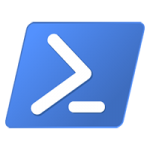Tag Archives: Windows 10
Windows 10 available on July 29
Microsoft has announced the release of the new operating system, Windows 10, on July 29 this year. Windows 10 is designed to run on the broadest device family ever, including, and not limited to, Windows PCs, Windows tablets, Windows phones, Windows for the Internet of Things, Microsoft Surface Hub, Xbox One and Microsoft HoloLens.
The vision of this new operating system is to give users the feeling of more personal computing, trust in protection and respecting the personal information, mobility across various devices, and natural interaction including speech, touch, ink and holograms.
Features:
- Start menu – Windows 10 brings it back
- Much faster than previous versions
- Quick startup and resume
- Windows Defender for free anti-malware protection
Range of innovations:
- Cortana – personal digital assistant on PC and smartphone; interaction is natural and easy via talking or typing. Cortana learns your preferences to provide relevant data.
- Microsoft Edge – all-new browser with built-in commenting on the web via typing or inking, sharing comments and a reading view that helps read web sites faster and easier. Together with Cortana it offers quick results based on your preferences.
- Office on Windows – in addition to the Office 2016 desktop suite, Windows 10 users will have access to new universal Windows applications for Word, Excel and PowerPoint, all available separately. With new touch-first controls in Excel you can create or update spreadsheets without a keyboard or mouse. OneNote and Outlook will be included as well.
- Xbox Live and integrated Xbox App – new game experience in Windows 10 for both PCs and tablets. You can play games on your PC, streamed directly from your Xbox One console to your Windows 10 tablets or PCs, within home. You can communicate with your friends on Win 10 PCs and Xbox One while playing any PC game. Capture, edit and share with Game DVR, and play new games across devices.
- Photos, Videos, Music, Maps, People, Mail and Calendar apps – updated design that looks and feels familiar from device to device. It is easy to start something on one device and continue it on another since the content is stored and synched through OneDrive.
- Windows Continuum – enables today’s laptops and 2-in-1 devices smooth transition of the tablet into PC and back. New Windows phones can be connected with Continuum to a monitor, mouse and keyboard to make the phone work like a PC.
- Windows Hello – uses biometric authentication of your face, iris or finger providing instant recognition, and there is no need to log in with password.
- Windows Store – easy install and uninstall of trusted applications, supported by the broadest range of global payment methods.
On July 29, you can get Windows 10 for PCs and tablets by taking advantage of the free upgrade offer, or on a new Windows 10 PC from your favourite retailer. The Windows 10 upgrade is designed to be compatible with your current Windows device and applications.
You can reserve your free Windows 10 upgrade now through a simple reservation process. Look for this icon in your system tray at the bottom of your screen, simply click on the icon, and then complete the reservation process.
If you would like to learn more on how to update your current Windows to Windows 10 read more about it here.
Posted in Microsoft, Tech News.
Tagged Microsoft, Windows, Windows 10
Android and iOS Apps in Windows 10
Microsoft has a vision to make Windows 10 the platform for developers, giving them the ability to cover phone, tablet, PC, hybrid and console. As there is a free upgrade for Windows 7 and 8 users to Windows 10, the company has an ambitious goal to reach 1 billion users on the Windows 10 family within 3 years of launch.
Microsoft announced their effort to bring developers and their apps to Windows in 4 steps.
Make it easy for web developers to present their sites as apps. It was already announced at Mobile World Congress earlier in the year. More specifications can be found here.
Allow developers to specially prepare existing Windows apps, whether Win32, .NET WinForms, .NET WPF, or any other Windows development technology and sell them through the Windows Store. The difference between the traditional installation and Store apps installation is that it will be installed, updated and uninstalled in a clean way to motivate users to try out new apps without the fear of too much of a hassle.
Give the opportunity to Android and iOS developers to take their iOS apps and build them for windows. Microsoft has developed an Objective C toolchain and middleware layer that provide the operating system APIs that iOS apps expect. (As an example King’s Candy Crush Saga for Windows Phone being one of the first apps built this way – only a few percent of the code had to be changed in order to fully port it in Windows phone.)
Allow Android apps to run in Windows Mobile, which is an official name for Windows on phones and sub-8 inch tablets. It will include an Android runtime layer that will let them run existing Android apps (both Java and C++) unmodified. Unlike Islandwood, which will require developers themselves to recompile their software to bring it to Windows, Astoria will in principle work with any old APK, without requiring the developer to do anything but publish the app in the store, as long as the APK sticks to the APIs that Astoria will provide.
There are two aspects to Android:
- Android Open Source Project (AOSP) – a mix of GPL and BSD-licensed open source code that anyone can take and fork
- Google Mobile Services (GMS) – an ever expanding closed-source set of applications and APIs that Google develops.
Microsoft did confirm that the supported proportion of AOSP and GSM would not be 100% in Astoria, however it will offer some integration points so that developers can with minor alterations support features like Cortana (personal digital assistant on PC and smartphone). The strategy is to allow developers to use the code they already have and encourage them to make Windows apps.
Download Windows 10 Technical Preview
Microsoft has released a tenchical preview version for Windows 10.
Remember, trying out an early build like this can be risky. That’s why we recommend that you don’t install the preview on your primary home or business PC. Unexpected PC crashes could damage or even delete your files, so you should back up everything.
After you install Windows Technical Preview, you won’t be able to use the recovery partition on your PC to go back to your previous version of Windows.
Keep in mind that this version has Windows updates on by default and they can not be disabled. Moreover, Microsoft will collect various information. For more information read Privacy Statements for Windows Technical Preview
Product Key: NKJFK-GPHP7-G8C3J-P6JXR-HQRJR
Download Links
- English 64-bit (x64) – (3.81 GB)
- English 32-bit (x86) – (2.93 GB)
- English (United Kingdom) 64-bit (x64) – (3.79 GB)
- English (United Kingdom) 32-bit (x86) – (2.94 GB)
- Chinese (Simplified) 64-bit (x64) – (3.96 GB)
- Chinese (Simplified) 32-bit (x86) – (3.05 GB)
- Portuguese (Brazil) 64-bit (x64) – (3.76 GB)
- Portuguese (Brazil) 32-bit (x86) – (2.91 GB)
Posted in Microsoft, Software Releases.
Tagged Microsoft, Windows, Windows 10









